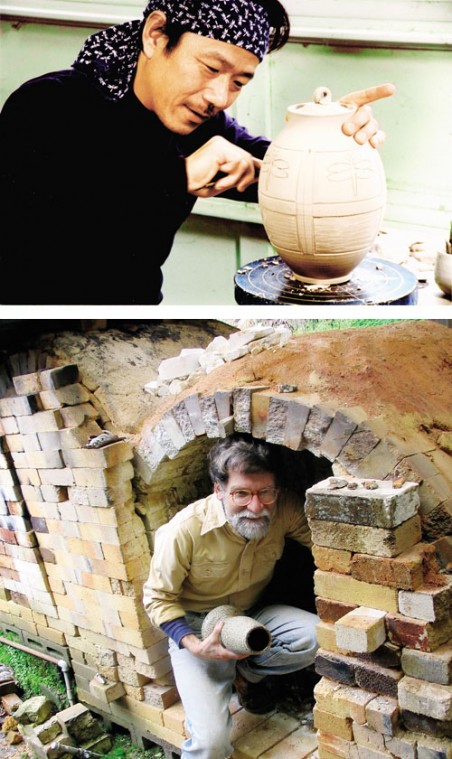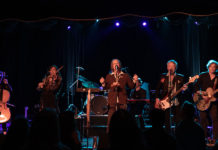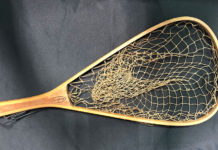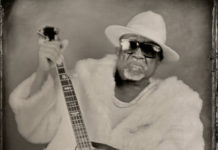Maybe it¹s universally true that the places where we work are
messy. In my own experience, at weekly newspapers, I¹ve always been
impressed at the way reporters¹ desks look like they need a major
purge, and to do the job right might require several trips to the
dump.
An artist¹s studio can hold the same aura. I know some artists
who cringe at the thought of opening up their studios, their
personal private work places, to total strangers who could wander
among the clutter and empty soda cans, passing judgement on what
might be works in progress or maybe even failed efforts.
³In the words of the immortal Frasier Crane,² said a painter I
know who zealously guards her studio¹s privacy, when asked what she
thought of the open studio concept. ³If you listen carefully you
can hear my skin crawl.²
In some cases inviting the public into your studio for tea might
not even be feasible or safe. Making art can be messy, and on top
of that some artists are slobs. The studio of Francis Bacon, the
famed British painter who died in 1992, was so remarkably Š what?
Not totally chaotic, because everything was probably just where
Bacon wanted it, but it looked vandalized, sacked, with paint
splotches smeared on the walls and the floor covered with debris
like some hurricane disaster zone. Hazardous might be the word to
describe it, and menacing, intense, precarious, and personal. I
don¹t think Bacon ever cleaned it nor did he want to.
³For me,² Bacon once told an interviewer, ³chaos breeds
images.²
The ³organized chaos² of Bacon¹s studio became legendary and
something to be seen for its own sake. After Bacon¹s death his
studio was donated to a gallery in Ireland where it is now on
display, a permanently open studio for people to visit, without the
artist. A book, ³7 Reece Mews,² documents the job of moving the
roomful of Bacon¹s ransacked-looking 30-year collection of disarray
and reassembling it as a permanent art history exhibit.
³The dismantling, archiving and transplantation of the studio Š
makes one of the great art conservation stories of modern times,²
wrote San Francisco Chronicle critic Kenneth Baker. ³Urban
archeologists were enlisted to map and catalog every scrap of
paper, soiled rag, slashed canvas and pot of soaking brushes.²
For an artist to open up his or her studio to the public, and
attempt to transform a personal and often very private work space
into a sort of impromptu gallery, even for a couple of days, seems
daunting ‹ a task potentially fraught with hard work and frayed
nerves. It must require courage or madness, maybe both.
On the other hand you might make some money and meet some
interesting new people. The snowballing success of Art at the
Source, the annual Sebastopol Center for the Arts¹ project that
enables more than 100 Sonoma County artists to open their studios
to the public for two weekends in June, proves that for many
artists and art lovers the open studio experience is worth it.
³I go just to see the studios, said Heidi Snowden, a Cazadero
painter who has made the rounds. ³I want to see how the artists set
up their space.²
Art at the Source ³affords an opportunity for people to see art
in process,² said Linda Galletta, the executive director of the
Sebastopol center for the Arts, which every spring for the past 12
years has launched the open studios project.
Last year an estimated 6,000 people visited artists in the West
County during the two weekends and bought $235,000 worth of art.
Art at the Source artists on average sold 28 items each, ³from very
small pieces to major works,² said Galletta.
More than 100 artists showed their work and the studios averaged
a total of 272 total visits over the four days, said Galletta. The
Sebastopol studio of painter Janet Charnofsky, where multiple
artists were exhibiting, drew nearly 900 people.
Not all the artists are in their own studios. Art at the Source
is a geographical entity, with boundaries that take in the
Guerneville-Monte Rio areas, run east along River Road to Highway
101, then south to Roblar Road including Bloomfield, and west to
the ocean. Sonoma County artists whose studios aren¹t within the
boundaries may participate by sharing a studio with a participating
artist whose studio is. Most of the art is by West County artists
but not all: artists from Windsor, Healdsburg, Santa Rosa and
Geyserville will be among the 126 painters, sculptures,
ceramicists, photographers, makers of hats, clothing, glassware and
jewelry who will be showing their work when 72 studios from
Guerneville to Bodega Bay open their doors on June 3, 4, 10 and
11.
A preview exhibit begins next week with a reception Friday
night, May 19, at the Sebastopol Center for the Arts gallery on
Depot Street. All the artists have work in the gallery¹s preview
show that¹s open every day through June 11.
The group show is a good way to sample the artists¹ work and
decide which ones to see in person, said Galletta. ³People preview
the show, get a catalog and mark the studios they want to
visit.²
Art at the Source artists range from first-timers, what Galletta
calls the ³emerging artists² who may be opening their studios for
the first time, to established artists who may also be old hands at
getting their studios in shape and who are, amidst all the frantic
preparedness, somehow capable of ³the amazing feat of looking cool
and collected,² said Galletta.
As the day draws near when the artists get ready to open their
doors and greet perhaps several hundred people, said Galletta, ³an
amazing transformation happens. Right now they¹re all in production
mode, painting, throwing, glazing and firing as fast as they can.
They want to really have a significant body of work completed for
those two weekends. Just before open studio a few days will be
devoted to the spick-and-span aspects of cleaning up their studios
and making them visitor friendly.²
As part of their arrangement with the Center for the Arts, all
the artists agree to be on hand in person. The personal contact,
said Galletta, is central to Art at the Source¹s appeal.
³Many people visit open studios to see the work, but they also
want to begin a relationship with the artist,² said Galletta. ³Part
of that is visiting their studio, meeting them and learning about
the work and then, hopefully, wanting to take a piece of work home
and then live with that artist¹s work.²
Mylette Welch, the Healdsburg painter known for her
brightly-colored paintings of dogs, said she savors the
unpredictableness of the open studio experience as well as the
chance to visit with people who like her work.
³It¹s fun,² Welch said in an interview about ArtTrails, another
Sonoma County open studio project that takes place every October.
³Lot¹s of people, you open your door and you don¹t know who¹s going
to come in. I¹ve had Brownie troops and group homes come through. I
have a lot of the same people each year who just come and eat
cookies and sit and talk.²
77.8
F
Healdsburg
July 14, 2025









